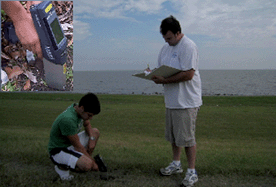In situ monitoring (field screening) and assessment of lead and arsenic contaminants in the greater New Orleans area using a portable X-ray fluorescence analyser
Abstract
This paper reports environmental assessment and identification of environmental contaminants caused by exposure to toxic metals such as Pb and As after Hurricane Katrina using an onsite analysis method. Concentrations of lead (Pb) and


 Please wait while we load your content...
Please wait while we load your content...